We’ve all done it: you use a metal tape measure, drag it across a long piece of lumber, and then you make the cut.
You marked it, you double-checked it, but standard tape measures can be inaccurate.
You’re left with a piece of wood that’s ⅛” too short, and now it’s basically junk for the project you’re working on. That’s why handymen have been upgrading to laser measuring tools for years now.
With a laser measuring tool, you can be accurate within 1/16 of an inch from far away, taking some of that uncertainty out of using a wobbly, over-stretched metal measure.
They’re easier to pull out, don’t snag your fingers (since there’s no metal tape whipping back to you at warp-speed), and generally weigh the same as the measure you’re already using.
If you’ve always wondered about laser measures but you’ve never taken the plunge, don’t worry: we’re here to explain it all.
Best Laser Measuring Tools For 2020
Best overall – Bosch Self-Leveling Alignment Laser
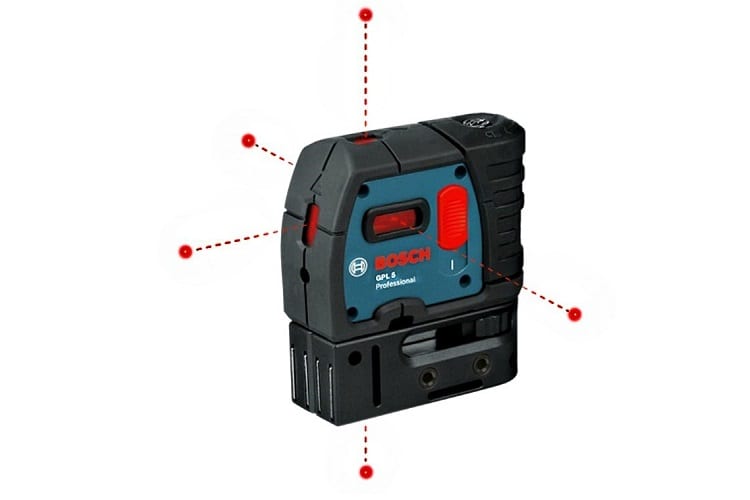
Bosch is one of the time-tested brands that everyone is lucky to have in their toolbox.
Their Self-Leveling Alignment Laser is the top dog of laser measurers, but it comes at a premium cost.
With this, Bosch allows you to account for the 3”, 4”, or 5” side of the tool itself (depending on which model you get) so that you get accurate measurements from one side of your alignment tool, all the way to the end of the laser.
Speaking of that laser, you get a total of 100 feet on it before results become inconsistent (this general doesn’t read anything over 110 feet at the absolute most).
Measure at a perfect 90° angle every single time, with easy to control settings and readings to ensure that your numbers are never wrong.
As the best laser measuring tool on the list, it comes with the ability to project plumbs, ensure leveling, and determine square points.
One other major point that I can’t stress enough is the Smart Pendulum System.
This self-regulates height, so you can always be assured that you’re starting from a flat angle for whatever project you’re working on.
There’s a multi-purpose attachment along the bottom, which helps you mount the measure, but also maintain a level ground.
Overall, it’s a very compact unit that you can place comfortably into any toolbox or tool bag, and have with you at all times. No need to sacrifice additional space.
| Size: | 4.2” x 3.2” x 1.6” |
| Range: | 100 feet |
| Operating Degrees: | 90° angle |
| Batteries: | Three AA batteries |
| Extra Features: | Easy Field Recalibration mode |
Runner up – Bosch Blaze One Laser Distance Measure

Expect to see even more Bosch, because they simply crush it when it comes to packing in helpful features for all of their tools.
This comes in at a much lower cost than the self-leveling measure, but the Blaze One actually gives you up to 165 feet of distance, which is pretty impressive.
But the reason that it didn’t take the number one best laser measure spot is because it has been known to have some issues here and there.
The LCD screen is powerful and bright, but that brightness might be cut in half after just a few months of off-and-on use.
This is something contractors and professional carpenters are going to see more than anyone else, but it’s still prevalent.
Including features such as auto squaring, default real-time measurements, you have a good preset of options.
That being said, it’s noticeably less than their top unit that made our number one spot. This is like Bosch Lite in terms of leisure measuring.
Bosch includes a decent IP54 waterproof rating, which helps with dust prevention as well, aiding in extending the life of your laser measure.
Where Bosch really picks up the slack here is their IAA laser product, which has such a small power output that you won’t run the batteries dry from this.
That being said, the LCD screen is probably the biggest power drain on this entire measure.
| Size: | 1.6” x 1.0” x 4.1” |
| Range: | 165 feet |
| Operating Degrees: | 90° angle |
| Batteries: | Two AA batteries |
| Extra Features: | IP 54 waterproof rating, auto square footage calculator |
Alternative – Black & Decker Laser Level
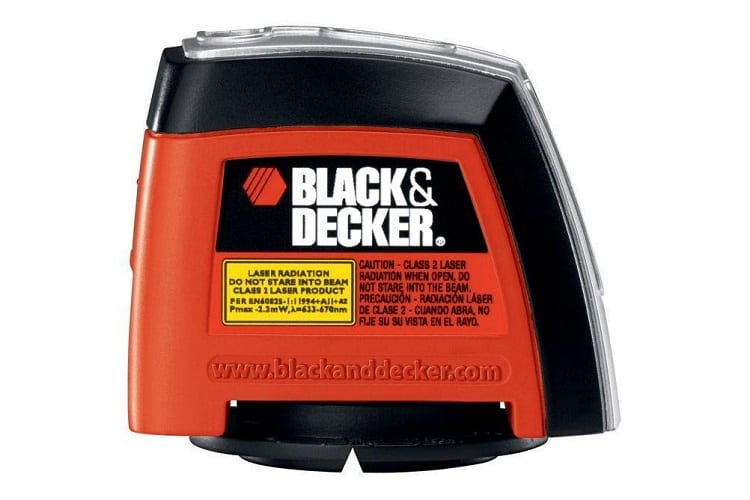
Black & Decker is the number one brand for inexpensive, long-lasting, and reliable tools for around the house.
You won’t see their products in the middle of as much construction, but they know their audience, and in this case it’s the DIY warrior who wants more accurate measurements.
Black & Decker makes one of the best laser measuring tools on a budget, but it doesn’t come without flaws.
It’s rated for 100 feet, but for full transparency, it dies off around 80-85 feet before you get inconsistent results.
Still, for this price, I’ll take an 80-foot amount of accuracy for an in-home, toolkit kind of laser measure.
If there’s anything that they’re known for, Black & Decker makes products that use such little energy, that you open up a measure or a drill to change batteries one day and don’t recognize the brand of battery you put into it in the first place.
This consumes such a little amount of energy from the AA batteries,
With your wall attachment and two bubble vials, you’re in good hands while trying to get a level, perfect measurement.
You have 360 degrees of rotation, with backlights to help maintain a clear line of sight on what you’re trying to measure.
Included with your purchase, you get a two-year warranty, which is more than you see from even more expensive laser measurers out here.
| Size: | 7.0” x 2.6” x 6.5” |
| Range: | 100 feet |
| Operating Degrees: | 360° rotating attachment |
| Batteries: | Two AA batteries |
| Extra Features: | Includes wall attachment, two bubble vials, backlights |
Alternative – Bosch 165 Laser Measurer

Last call for Bosch, but after you see what they can do, you just can’t avoid their power. Their 165 Laser Measurer does what you’d expect: measures up to 165 feet.
This comes with some of the same quality controls as the other Bosch measurers we’ve seen, but it’s technically one model up from the one in our second spot.
It’s not the best laser measurer in the Bosch lineup, but it does come with that same great LCD display, even if it does soak up a lot of battery life.
This runs on two AA batteries, which do not come included in the package. There’s an IP rating that repels light amounts of rain and helps prevent dust buildup as well, but nothing more.
Utilizing the auto square feature, as well as real-time measurement adjusting, you have everything you need here. Laser measures are accurate, and within 1/16 of an inch, Bosch will give you clear, definitive numbers.
You only get one year on the warranty, and eight weeks on labor, which is a very specific and short window.
Bosch offers a thirty-day money-back guarantee, so if you find that i t’s underwhelming and want to go for our top pick, or it’s just not doing what you want, you have that option available to you.
| Size: | 1.65” x 4.1” x 1.0” |
| Range: | 165 feet |
| Operating Degrees: | 90° angle |
| Batteries: | Two AA batteries |
| Extra Features: | Stores your last ten measurements, IP 54 waterproof rating |
Alternative – Tacklife HD60 Classic Laser Measure
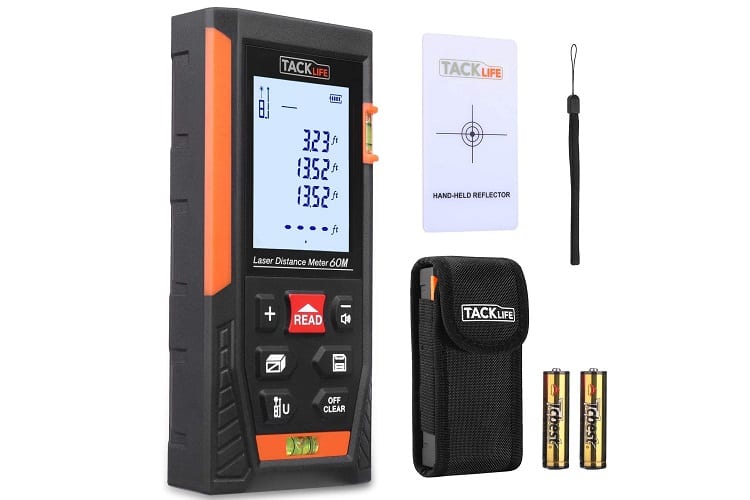
Last but not least, Tacklife comes in with a different approach, but a much lower cost than you’re going to find on average.
It’s one of the best laser distance measures for a reason: it gives an impressive 196 feet of accuracy.
I say “of accuracy” because the laser can actually go farther than that, but Tacklife themselves rates it as effective at 196 feet.
You’re not just getting the laser measure, though: you’re getting a whole kit. This includes a carrying pouch, batteries, and a reflector with a target painted on it.
Utilize the area, volume, and pythagorean modes, as well as saving measurements in the internal memory, and seeing everything nice and clear on the large, well-lit LCD display.
So why did it make it to the bottom of the list? It’s bulky. Plain and simple, it’s just a bulky piece, and that makes it a little bit harder to use in specific situations.
If you’re just going to lay this on the floor to measure, then it doesn’t matter how big it is (so long as it’s self-correcting), but holding this up to get unique measurements can be a bit awkward.
Thankfully, it only weighs 7.4 oz, so it’s not like your arm is going to get tired.
With addition and subtraction modes, a waterproof and dustproof IP rating, and an auto power off function to conserve that battery life,
Tacklife thought of just about everything to include in this laser measure. Inexpensive, effective, and packed with a two-year limited warranty, Tacklife is a great budget-friendly option.
| Size: | 4.3” x 1.0” x 2.4” |
| Range: | 196 feet |
| Operating Degrees: | 90° angle |
| Batteries: | Two AA batteries |
| Extra Features: | Auto shut-off in 150 seconds, ultra bright LCD screen |
Laser Measuring Tool Buying Guide and FAQ
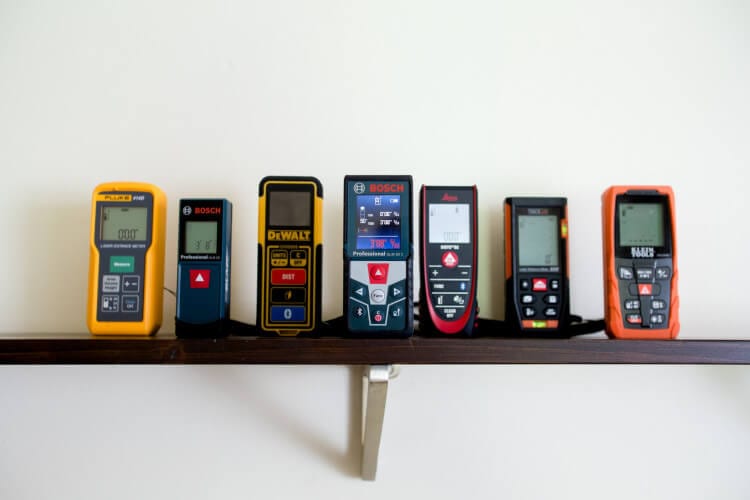
What is a Laser Measuring Tool?
You likely have a metal tape measure in your tool bag right now. You’ve used it forever, your father used it, and everyone does.
In recent years, laser measure tools have become more reliable and sustainable than ever before, giving you an easier way to get accurate measurements of multiple areas that you can trust.
These electronic tools use a laser projected from a lens, and determines where that laser ends to tell you the measurements from start to finish.
Instead of a metal tape, the laser hits a solid surface, and the on-board computer measures how far out the light is travelling.
The best laser measuring tools will also account for self-correction.
Basically, if your laser measuring tool is about 3” long, the machine will account for that length when you place the back of the laser measure against the first measure point that you’ve chosen.
If there are 60” between two walls, the laser will move 57” and account for the 3” length of the machine, showcasing a total of 60”.
How Accurate Are Laser Measures?
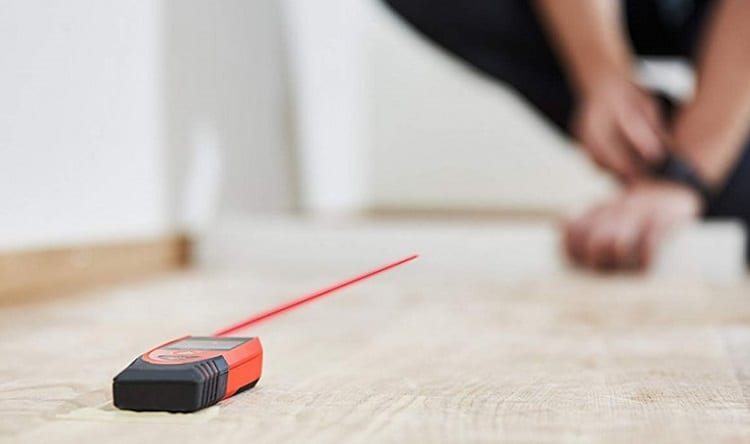
Plain and simple, most laser measures are accurate within ⅛ of an inch.
However, the ones on this list are all accurate within 1/16 of an inch, because sometimes that little sliver matters a great deal during custom projects.
The best laser measuring devices will give you that little bit of leeway. The reason that you see maximum detection lengths on a lot of these laser measures is because you’re going to eventually cap out.
The laser inside of the measure is only so effective up to a certain distance.
There are different grades of lasers. There’s a lot to get into with them, which is why manufacturers will list the laser grade, but also display the maximum distance that it can go.
The laser inside of your measurer begins to phase out at a certain point, because it can’t support enough light to still be readable by the machine.
If you just aimed a red dot laser pointer out into the open air, eventually, the light is going to fade out and it won’t be visible anymore.
It’s just like how flashlights eventually get grainy and bleed into the dark at the end of the light beam.
After a laser is pushed to a certain distance, the results can become hard to read or inaccurate. It’s recommended to stay within a 10% margin of the maximum distance that a laser can go.
A 100 foot laser should be used up to 90 feet, just to be safe, and so on.
Some manufacturers will include reflector places that are about 1/16 of an inch so that you can have a guaranteed solid beam at the end of your line.
How do Laser Measuring Tapes Work?
In our laser measure reviews, we took to the scientific data on how they work, and it’s really quite fascinating.
Light has its limits. Whether it’s natural sunlight, or artificial light from a laser pointer or flashlight, it only goes so far.
The laser in your measure reaches a certain distance, where the light from the laser reflects off of the target.
The reason we use lasers instead of just standard light from a flashlight, is that it reflects on just about any surface without fail.
The laser basically reflects back into the laser measure. The computer doesn’t just go, “There’s 97 ft of laser,” it measures how long it took that laser to travel, and depending on the miniscule amounts of time, calculates its distance.
Many laser measure manufacturers also account for the body of the machine from the back end, to the beginning of the laser, which is why you’ll see self-correcting as a feature on many higher-end laser measurers.
How do You Measure a Room With a Laser?
The machine does most of the work for you. That’s the beauty of it.
If you want to get the total volume of the room, or go full pythagorean mode, you can do that with minimal intervention or mental math.
Select the mode you want to use, and position your laser measure accordingly. If you want to know the width of a wall, place the measure against the wall, spanning its width.
You want to place this in the corner, so you’re getting a level read, and so that it can be up against the neighboring wall for stability.
Press the button on your laser measure that captures the length of the laser, and remove it from the wall. Take a gander: that’s your measurement.
If you select the volume mode, you’ll be able to do the same steps as mentioned above. Put it in a corner where it has the back and side against two separate walls.
Make sure it’s low to the floor, and scan the room using your volume measurement.
Higher-end laser measures will only need this if there’s also a secondary laser in the base that points away from the neighboring wall.
However, you may need to do this in two parts. You can then move it along the wall to the other corner, and measure it that way.
Subsequently, you can just take two separate measurements: one for the width wall, one for the depth wall, and use a calculator to add up the volume after the fact.
Laser Precision for Precise Projects
No more guesstimating—it’s time to have laser precision for your very specific tasks.
If you’re going to spend time working on a detailed project, no matter how big or small it is, it deserves your attention to detail.
Stop making the wrong cuts because you got the wrong measurements, and start measuring the smart way.









